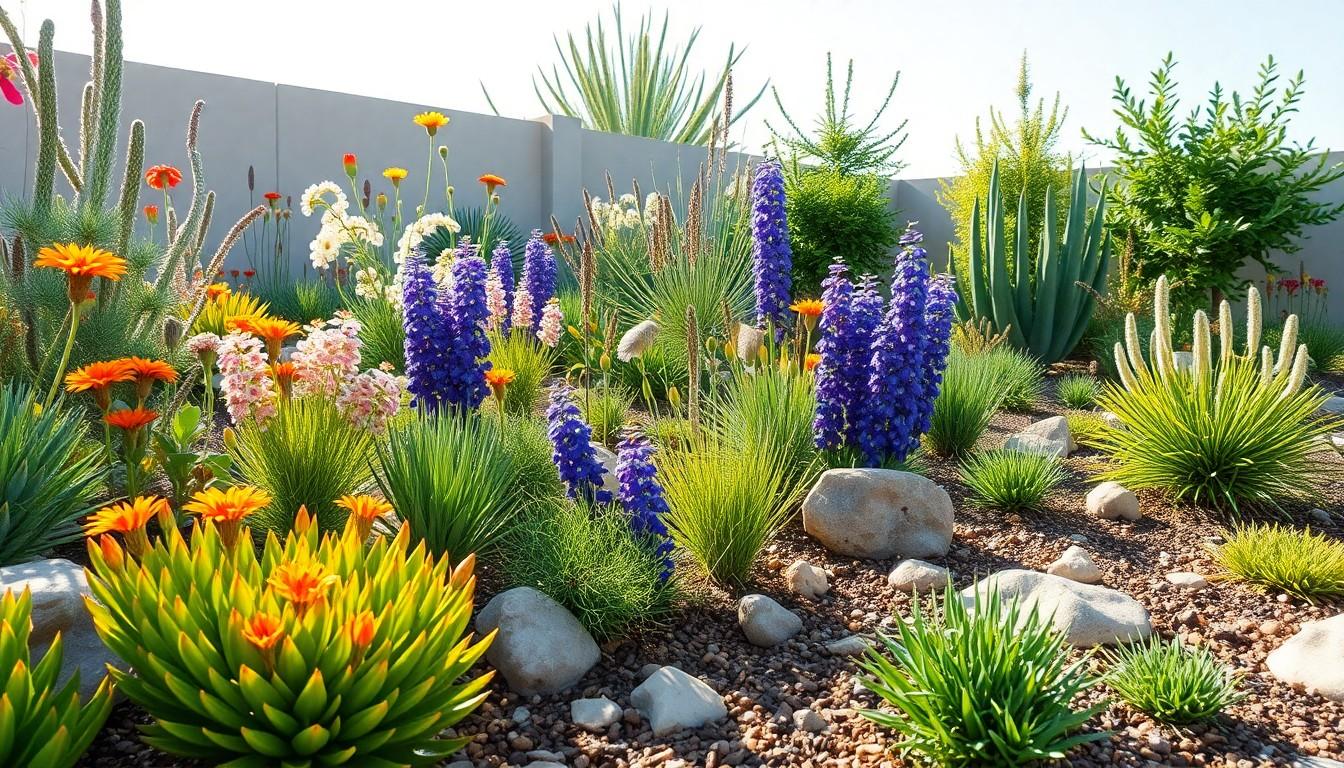Imagine stepping into your backyard and feeling like you’ve just entered a lush, green paradise—all while saving the planet. Eco-friendly landscaping isn’t just a trend; it’s a lifestyle choice that transforms ordinary yards into vibrant ecosystems. With a sprinkle of creativity and a dash of sustainability, anyone can create a beautiful outdoor space that benefits both nature and the neighborhood.
Eco Friendly Landscaping Ideas
Eco-friendly landscaping transforms ordinary yards into vibrant ecosystems. It prioritizes nature while enhancing beauty and supporting local wildlife.
Importance of Sustainability in Landscaping
Sustainability in landscaping promotes long-term environmental health. Prioritizing native plants reduces the need for chemical fertilizers and pesticides. Utilizing permeable surfaces prevents water runoff, improving local water quality. Soil health improves with organic practices, fostering biodiversity. Communities benefit from sustainable practices, creating habitats for wildlife and enhancing urban green spaces.
Benefits of Eco Friendly Landscaping
Eco-friendly landscaping offers numerous advantages. It lowers maintenance costs by utilizing drought-resistant plants, reducing water consumption. Increased habitats for pollinators like bees and butterflies contribute to biodiversity. The aesthetic appeal of natural elements enhances property value. Carbon sequestration occurs, helping combat climate change. Engaging in eco-friendly practices fosters community awareness and responsibility towards nature.
Popular Eco Friendly Landscaping Ideas

Eco-friendly landscaping combines aesthetic appeal with environmental benefits. Several popular ideas exist, including native plant landscaping and xeriscaping.
Native Plant Landscaping
Native plant landscaping focuses on using plants naturally found in the local ecosystem. These plants require less water and maintenance compared to non-native varieties. They also provide habitats for local wildlife, enhancing biodiversity. By integrating native species, property owners reduce the need for chemical fertilizers and pesticides. This method promotes a balanced ecosystem, benefiting both the landscape and the community.
Xeriscaping
Xeriscaping emphasizes water conservation, making it ideal for regions with limited rainfall. This landscaping approach incorporates drought-tolerant plants that thrive in arid conditions. By selecting these plants, landscapes become more resilient to climate fluctuations. Xeriscaping often includes rocks and mulch to minimize evaporation and reduce runoff. Property owners can significantly reduce water usage while creating an attractive, sustainable outdoor space.
Sustainable Practices for Eco Friendly Landscapes
Sustainable practices enhance eco-friendly landscapes by promoting resource conservation and environmental health.
Rainwater Harvesting
Rainwater harvesting captures and stores rainwater for landscape use. This method reduces dependence on municipal water sources. By installing rain barrels or cisterns, homeowners collect runoff from roofs and distribute it efficiently. Utilizing this natural resource conserves water and lowers utility bills. Implementing a drip irrigation system ensures that plants receive necessary moisture directly at the roots, minimizing waste. This approach encourages smart water management while supporting sustainable gardening.
Composting and Organic Soil
Composting transforms kitchen scraps and yard waste into rich organic material. This natural process enriches soils, boosting their fertility without chemical additives. Organic soil retains moisture effectively and promotes healthy plant growth. Using compost improves soil structure and supports beneficial microorganisms. Applying compost to landscapes encourages sustainability by reducing landfill waste and closing nutrient cycles. These practices result in vibrant ecosystems that nourish indigenous flora and fauna.
Incorporating Hardscaping in Eco Friendly Designs
Hardscaping enhances eco-friendly landscapes, creating functional, sustainable outdoor spaces. Incorporating elements like walkways, patios, and retaining walls improves aesthetics while supporting environmental goals.
Permeable Paving Options
Permeable paving serves multiple purposes, allowing water to filter through surfaces and reduce runoff. Materials such as porous concrete, permeable pavers, and gravel provide effective drainage solutions. These options promote groundwater recharge and protect local water quality by minimizing surface water pollution. They also contribute to landscape beauty by integrating with plant life, creating visually appealing pathways surrounded by greenery. Selecting permeable alternatives leads to sustainable drainage solutions and lowers the risk of flooding in residential areas.
Recycled Materials in Hardscaping
Using recycled materials in hardscaping boosts sustainability and reduces waste. Reclaimed bricks, stones, and concrete can be repurposed, creating unique textures and styles in outdoor design. Implementing these materials not only conserves natural resources but also adds character to landscapes. Local sources for recycled materials limit transportation emissions, further supporting sustainability goals. By incorporating such elements into hardscaping, property owners enhance eco-friendly landscapes while showcasing innovative approaches to design and construction.
Commitment to Nurturing the Environment
Embracing eco-friendly landscaping isn’t just about aesthetics; it’s a commitment to nurturing the environment. By choosing sustainable practices and native plants, individuals can create beautiful spaces that support local wildlife and conserve resources.
Innovative techniques like xeriscaping and rainwater harvesting not only enhance the landscape but also promote responsible water management. As more people adopt these eco-conscious strategies, they contribute to a healthier planet and a stronger community connection.
Ultimately, eco-friendly landscaping reflects a lifestyle that values nature while providing lasting benefits for generations to come.

